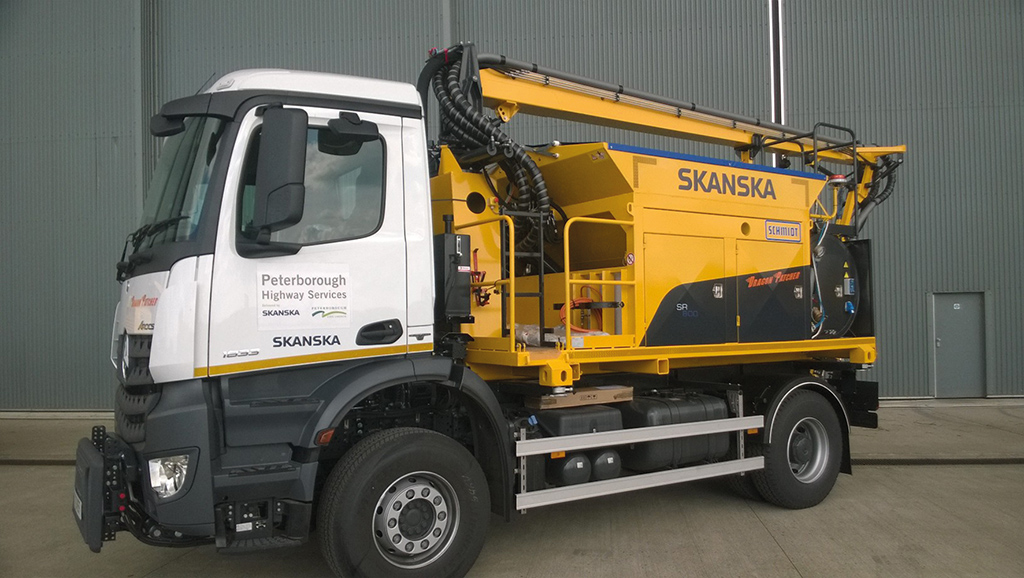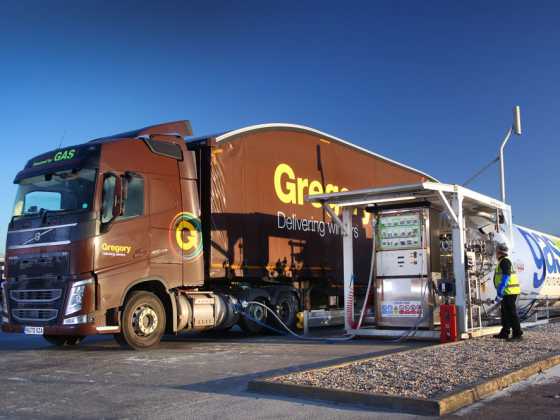The Driving for Better Business campaign

Fleet operators of all sizes, including those businesses that only make occasional trips, need to understand their vital role in keeping Britain’s roads safe. The newly refreshed Driving for Better Business campaign will help fleets to understand and manage their road risk, writes Simon Turner
Improving how you manage work-related road risk might not sound like an obvious candidate for helping your organisation improve its green credentials but it might make a bigger difference than you would think.
When it comes to fleet safety and risk management there are generally five types of organisation. Those that manage the issue well and enthusiastically, aiming for best practice. There are those that know there’s a risk but simply do the minimum to tick a box. Then there are those that know there’s a risk but don’t have the time, resources or experience to manage it as well as they might. This is followed by those who aren’t even aware of a risk that needs managing, and those who don’t know and don’t care.
The first type of company manages their work-related road risk effectively, and also often find they make substantial reductions in various areas of their fleet costs, making themselves more efficient and more profitable.
Construction firm Skanska and information management specialists Iron Mountain are two such organisations that have seen great business benefits from better management of drivers and vehicles. They have lowered their fleet costs, not just from reducing avoidable vehicle damage, but also finding that better managed, safer drivers, also tend to use considerably less fuel.
Any manager falling into the last category is unlikely to be reading this article which means the rest of you probably fall in the middle – and are exactly the people we hope will be interested in the Driving for Better Business (DfBB) campaign.
Driving for Better Business
DfBB draws on the experience of companies like Skanska and Iron Mountain, as well as a host of other employers, both large and small, sharing their stories and, more importantly, their results with others to inspire them to manage their work‑related road risk more effectively.
It is a campaign that brings together the private sector with government and road safety professionals to promote effective management of at-work drivers from a valuable business perspective.
While the campaign has been around for some time, which is why we have so many well-known business champions, we are refreshing the campaign to herald the significant support we are now receiving from Highways England. Formerly the Highways Agency, Highways England is now a government-owned company responsible for operating and maintaining the Strategic Road Network consisting of England’s motorways and major trunk roads.
Their involvement is easy to understand. They have been given £15 billion by the government to invest in improving the Strategic Road Network, making it safer and easing congestion. Safer roads is one thing however – fleet operators, and also small businesses with a few people who go out to see clients, and who traditionally don’t see themselves as fleet operators or business drivers, also need to step up to the plate and ensure that they and their drivers aren’t contributing to the problem.
Incidents on the road
Highways England’s Traffic Officer Service, patrolling the motorways in their Black and Yellow incident response vehicles, has to deal with over 40,000 incidents every year.
Common incidents include rear-end shunts in heavy traffic, tyre failures, even something as basic as running out of fuel – and happen all too frequently. Many of these incidents are the result of a simple lack of concentration or attention, and many more are the result of poor vehicle maintenance or a failure to check the vehicle properly.
Some of these incidents involve business drivers, some don’t, but the one thing they all have in common is the disruption they cause to many hundreds if not thousands more who get held up in the subsequent long delays, and these delays definitely do have an impact on business.
Safety while driving for work
Fleet safety often ends up some way down the list of priorities at many companies. Sometimes this is due to a lack of awareness regarding the actual risks and the legal obligations to manage it effectively.
Sometimes it’s because the operational requirements of running the business, making sales, meeting payroll, and so on, appear to get in the way.
Whatever your reason for not managing this risk effectively at the moment, Driving for Better Business may be able to provide some assistance.
The campaign is about two things: First, engaging organisations of all sizes and showing them it is a good business
decision to start doing so. Second, providing a range of free resources that make it easy to get started.
Our new campaign consists of live events for senior managers and fleet decision makers, webinars for those that can’t attend a live event, guest blogs and articles from our business champions and leading experts in the fleet risk management industry.
Some of our top business champions will be attending our events to share their stories in person, giving delegates the opportunity to quiz them directly on the challenges they have faced in the past, what actions they took, and the benefits they saw.
What many delegates like about these sessions is that this isn’t about some big fleet with a big budget that is doing everything right – our champions share their stories with refreshing honesty. Some of their early challenges will be the same as those you may face yourself. Many of them still face challenges today – just different ones to those faced five or 10 years ago – and they’re happy to discuss how they’re dealing with them.
Managing the risk
The main objective of the campaign is to encourage employers to manage their work‑related road risk more effectively by doing some relatively simple compliance activities.
The first is to perform a risk assessment of their driving activities. We have a free online gap analysis and benchmarking tool which companies can use at www.fleetsafetybenchmarking.net
The second activity is to create a new safe driving policy if you don’t already have one, and to review and update it if you do.
Third, we want to encourage all organisations to start measuring their collisions, vehicle damage and associated costs including insurance premiums and mileage. We will be sharing a range of ideas and advice about how to reduce these costs but if you don’t measure them, you can’t improve them.
These three essential activities are about getting the basics right and building a strong foundation from which to start making real improvements and cost savings. We can also share stories of fleets that have implemented driver training programmes, installed vehicle telematics and started using advanced fleet management tools to further reduce costs.
What you buy
The Campaign is also focused on encouraging fleets to change their purchasing strategy. One of the most effective strategies any employer can pursue is to ensure their vehicles are fitted with Autonomous Emergency Braking (AEB) although different manufacturers sometimes call it different things.
AEB uses a series of camera and radar sensors which can identify if the car is about to be involved in a collision. If the driver fails to react, the car will perform its own emergency stop. Research performed by EuroNCAP in 2015 found that AEB reduces rear-end shunts by 38 per cent.
Any fleet that is measuring crashes and crash costs should immediately see the potential impact of this research. AEB eliminates many of the smaller incidents but it also reduces the severity of those that still occur.
This means that the cost savings on rear-end at-fault crashes can be as much as 50-60 per cent.
DfBB really wants fleets and employers to demand their vehicle suppliers offer cars fitted with AEB as standard at no extra cost. Encourage drivers, including grey fleet drivers, to specify AEB and other safety systems on their new cars wherever possible, maybe providing incentives to do so.
And try not to ban optional extras when they are safety related. There may be additional costs but these could be more than offset by the savings from reduced collisions and lower fuel use. Your business will not only be safer, it will be greener too.






